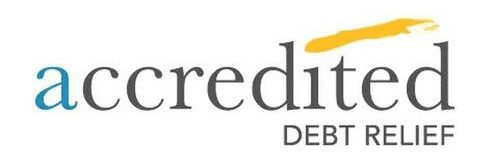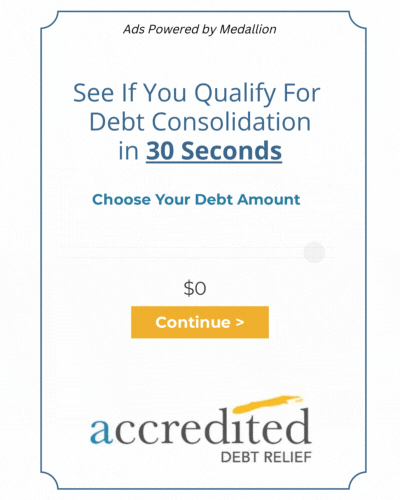Debt can be a heavy burden on anyone’s shoulders. It can cause stress, and anxiety, and even lead to depression. Being in debt can also affect your credit score, making it harder to get approved for loans or credit cards in the future. However, getting out of debt is not impossible, and it is the first step toward financial freedom.
Overview of this 5-step guide
This guide will provide you with five steps to help you get out of debt. These steps include assessing your debt, creating a budget, developing a debt repayment plan, increasing income, and staying motivated. By following these steps, you can start taking control of your finances and work towards a debt-free life.
Step 1: Assessing Your Debt

Gathering all debt information
The first step in getting out of debt is to gather all your debt information. This includes credit card balances, student loans, car loans, mortgages, and any other debts that you may have.
Calculating total debt
Once you have gathered all your debt information, it’s time to calculate your total debt and consider a debt consolidation program. Add up all your debts to get a clear idea of how much money you owe.
Understanding interest rates and minimum payments
To effectively manage your debt, you need to understand the interest rates and minimum payments for each debt. This will help you prioritize which debts to pay off first. High-interest debts should be paid off first, as they will cost you more money over time.
Step 2: Creating a Budget
Determining monthly income
To create a budget, you first need to determine your monthly income. This includes any income you receive from your job, freelance work, or other sources.
Tracking expenses
Next, you need to track your expenses. This includes fixed expenses like rent, utilities, and car payments, as well as variable expenses like groceries, entertainment, and clothing.
Identifying areas to cut back
Once you have tracked your expenses, you can identify areas to cut back. This may include eating out less, canceling subscriptions, or finding cheaper alternatives to your current expenses.
Allocating funds towards debt repayment
Finally, you need to allocate funds toward debt repayment. This means setting aside a certain amount of money each month to pay off your debts. This should be based on your budget and the debt repayment plan you develop in step 3.
Step 3: Developing a Debt Repayment Plan

Prioritizing debt repayment
Now that you have a budget in place, it’s time to prioritize debt repayment. You should focus on paying off high-interest debts first, as they will cost you more money over time.
Choosing a repayment strategy
There are two popular debt repayment strategies: the snowball method and the avalanche method. The snowball method involves paying off your smallest debts first, while the avalanche method involves paying off your highest-interest debts first.
Snowball method vs. avalanche method
A snowball method is a great option for those who need motivation and a sense of accomplishment. Paying off smaller debts first can give you a sense of progress and keep you motivated. The avalanche method is a better option for those who want to save money on interest in the long run.
Step 4: Increasing Income
Taking on a part-time job
Increasing your income is an important step in getting out of debt. One way to do this is by taking on a part-time job. This can provide you with extra income to put towards debt repayment.
Negotiating a raise
If you have a full-time job, you can also try negotiating a raise. This will increase your income and allow you to put more money towards debt repayment.
Selling unwanted items
Another way to increase your income is by selling unwanted items. This can include clothes, electronics, or furniture. You can sell these items online or at a garage sale and use the money to pay off your debts.
Step 5: Staying Motivated

Celebrating small victories
Staying motivated is crucial to getting out of debt. One way to do this is by celebrating small victories. This can include paying off a credit card or reaching a milestone in your debt repayment plan.
Visualizing debt freedom
Another way to stay motivated is by visualizing debt freedom. This means imagining what your life will be like once you are debt-free. This can help keep you focused on your goal and motivated to keep going.
Seeking support from loved ones
Finally, you can seek support from loved ones. Let them know about your goal to get out of debt and ask for their encouragement and support. This can help you stay accountable and motivated.
Additional Tips
Avoiding new debt
To avoid falling back into debt, it’s important to avoid taking on new debt. This means avoiding credit card purchases and only taking out loans when necessary.
Seeking professional help
If you’re struggling to manage your debt, consider seeking professional help. This can include meeting with a financial advisor or credit counselor.
Creating an emergency fund
Finally, it’s important to have an emergency fund. This is money set aside for unexpected expenses like car repairs or medical bills. Having an emergency fund can prevent you from going further into debt when unexpected expenses arise.
Conclusion
Getting out of debt is not easy, but it is possible. By following the five steps outlined in this guide, you can start taking control of your finances and working towards a debt-free life. These steps include assessing your debt, creating a budget, developing a debt repayment plan, increasing income, and staying motivated.
If you’re in debt, it’s important to take action toward debt freedom. By following the steps in this guide, you can start making progress toward a debt-free life.
Remember, getting out of debt is a journey, not a sprint. It will take time and effort, but it’s worth it in the end. Stay motivated, stay focused, and keep working towards your goal.
Frequently Asked Questions

What is the first step to getting out of debt?
The first step to getting out of debt is to assess your current financial situation by creating a budget and identifying your debts and expenses.
How can I prioritize my debts?
You can prioritize your debts by paying off the ones with the highest interest rates first, as they will cost you the most in the long run.
Should I consider debt consolidation?
Debt consolidation can be a helpful option if you have multiple debts with high interest rates, as it can simplify your payments and lower your overall interest rate.
How can I negotiate with creditors to reduce my debt?
You can negotiate with creditors by explaining your financial situation and proposing a payment plan that works for both parties. It may also be helpful to enlist the help of a credit counseling agency.
How can I increase my income to pay off debt?
You can increase your income by taking on a side job or freelance work, asking for a raise at your current job, or selling items you no longer need.
Can I still save money while paying off debt?
Yes, it’s important to save money while paying off debt, even if it’s just a small amount each monthly payment. This can help you avoid going further into debt in case of emergencies.
How can I stay motivated while paying off debt?
You can stay motivated by setting achievable goals, tracking your progress, rewarding yourself for milestones, and finding support from friends and family.
How long does it typically take to get out of debt?
The amount of time it takes to get out of debt varies depending on your debts and income, but it can take several years to pay off significant debt.
What should I do once I’m debt-free?
Once you’re credit card debt-free, you should continue to live within your means, save money, and invest in your future financial goals.
What resources are available to help me get out of debt?
There are many resources available to help you get out of debt, including credit counseling agencies, financial advisors, debt management programs, and online calculators and budgeting tools.
Glossary
1. Debt: Money owed to a lender or creditor.
2. Credit Score: A numerical representation of a person’s creditworthiness.
3. Budget: A financial plan that outlines income and expenses.
4. Interest: The cost of borrowing money.
5. Minimum Payment: The smallest amount required to be paid on a debt each month.
6. Debt-to-Income Ratio: The percentage of a person’s income that goes towards debt payments.
7. Secured Loan: A loan that is backed by collateral such as a house or car.
8. Unsecured Loan: A loan that is not backed by collateral.
9. Consolidation: Combining multiple debts into one payment.
10. Negotiation: The process of discussing and agreeing on payment terms with a creditor.
11. Bankruptcy: A legal process that allows for the discharge of certain debts.
12. Credit Counseling: Professional advice on managing debt and improving credit.
13. Debt Settlement: A negotiation with a creditor to pay less than the full amount owed.
14. Snowball Method: A debt repayment strategy where the smallest debts are paid off first.
15. Avalanche Method: A debt repayment strategy where the debts with the highest interest rates are paid off first.
16. Refinancing: Replacing an existing loan with a new loan at a different interest rate or payment terms.
17. Grace Period: A period of time after a missed payment where no penalty or interest is charged.
18. Collection Agency: A company hired to collect unpaid debts.
19. Garnishment: A legal process where a creditor can take a portion of a person’s wages or assets to pay off a debt.
20. Default: Failing to make payments on debt as agreed.







